Making Vermicompost in Agronomists. 1st Part
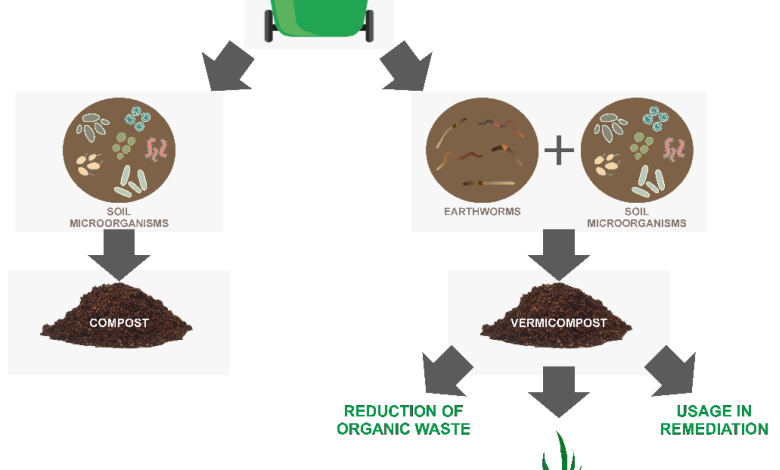
After writing the article Vermiculture, making worm compost for the organic garden I began to be a little more interested in vermicompost, and I decided to find out about some real experience of someone who carried out this technique so that I could leave you good and practical advice.
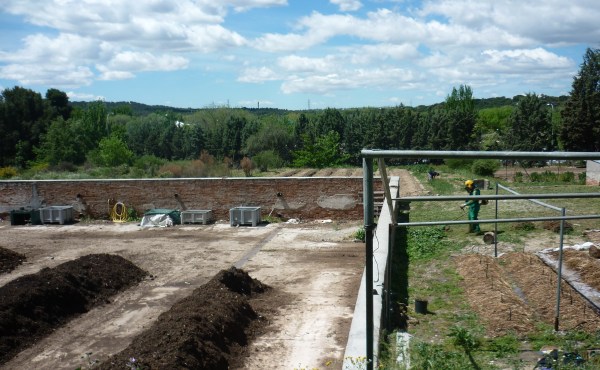
vermicomposter at university
This time it is a group of four students from the Higher Technical School of Agricultural Engineers of Madrid (ETSIA) belonging to the Ecologist Group of Agronomists (GEDEA). GEDEA is an association of students that, together with other associations such as Agrofogones, Agrónomos sin Fronteras, the Mountain Group and many more, give life to the School and encourage the participation and implementation of interesting initiatives by students. In this case the idea was to create a vermicopostera or vermicomposter.
Just over a year ago, these four students presented a proposal to the School to be able to practice vermiculture in the practice fields. The response was favorable and since then they have had a small space in the ETSIA practice fields, where an initial population of worms is maintained and multiplied to obtain and analyze the precious fertilizer they produce: vermicompost.
I am going to give you a summary of everything they told me when I visited the small ETSIA vermicomposting plant (very close to the Organic Garden and the Green Classroom – Greenhouse that we talked about in previous articles).
The initiative was launched in February 2013, and it seems that the students in charge of it are achieving their goal: to obtain quality vermicompost from composted organic waste that, from the point of view of vermiculture, is not the more appropriate.
We use as food for the worms rabbit, chicken or pig droppings from the ships of the driving ranges themselves. In reality, they are not the most suitable for this activity, since the quality of the raw material is essential for the final quality of the product and the differences between intensive and extensive livestock are very significant. Cow or horse manure are the most appropriate in terms of the quality of the final vermicompost, that is why obtaining a good worm compost from not so good materials is one of our challenges, mainly due to the fact of reusing a waste that is harmful and whose elimination would entail an economic cost for the School.
We obtain a product of a certain quality by eliminating the costs of collecting this waste by an external company.
Precomposting to make Vermicompost
As we saw in the previous article, worms need a complete and easy to digest food. For this purpose, compost is used, which is produced in the composting plant of the driving ranges, attached to where the worms are found (see photo above).
As this material is not the vermicompost but the «ingredient» that the worms use to make it, this phase is called «pre-composting». To obtain it, rabbit, chicken and pig faeces are precomposted together with pruning remains and crop residues from other facilities on the driving ranges, such as greenhouses or the orchard (this is a way of disposing of waste and, at the same time, take advantage of them for a good purpose, something key in Ecological Agriculture).
This phase lasts about 2-3 months. During this time, pre-composting obtains the adequate «food» for the worms, decomposing organic remains and eliminating unwanted elements (seeds, pathogenic organisms and harmful chemical remains from non-organic livestock manure…). The latter is achieved when 60-70ºC (thermophilic phase) is reached, so the temperature in the compost heaps must be continuously controlled to know how the process is going (in the photo you can see a thermometer stuck in the heap that shows us kept permanently informed).
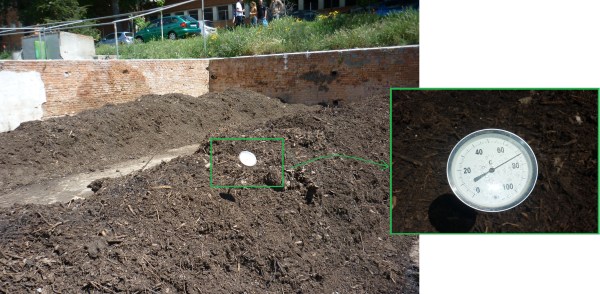
Laboratory analyzes of the material are also carried out to check the quality of the initial material and the precomposted material. (Later, once the vermicompost has been obtained in the second stage, its characteristics will also be analysed).
It is very important to turn the compost heaps, to maintain the aerobic phase and prevent the lack of oxygen that would cause anaerobic (unwanted) fermentations. To do this, a turning machine is used that, as its name suggests, turns the piles and the aeration makes the aerobic phase prevail.
When the piles have been at 60-70ºC long enough, the temperature should drop to about 40-45ºC, so that the precompost stabilizes and can be used as «food» for the worms.
THE WORMS THAT PRODUCE VERMICOMPOST
Earthworms (Eisenia foetida) are used.The strategy followed in this case was the following:
– At first, half a cubic meter of worms (about 25,000 specimens) were purchased from a company in the sector.
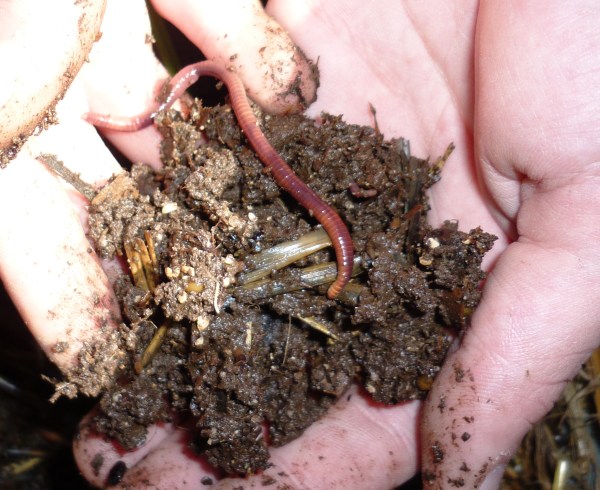
– In a first, which will end in a few months, the worms carry out an “expansion process”. During this time they are reproducing permanently and exponentially (if the conditions are right, each generation doubles in 3 months).
– When they stop reproducing because the occupancy in the compost cords is maximum, half of the worms will be removed (later we will see how), new piles will be made where the removed worms will be deposited, so that they reproduce again and, by increasing the population, increase the number of cords for the experimental tests.
Earthworms maintain a maximum reproductive rate when the temperature remains around 20-25ºC. From 0 to 10ºC the reproduction rate is low, and below 0ºC or above 35-40ºC the worms will die, so care must be taken not to reach these extremes. To do this, in some seasons straw covers are placed on the cords where the worms live, which will help maintain the temperature.
Until here today’s post!
As I still have many things to tell you about how these future Agricultural Engineers obtain vermicompost, we will publish the 2nd part of the article very soon

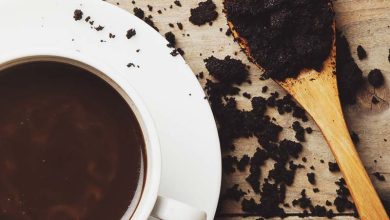
![Photo of Pruning the Orange Tree in a Pot: [Importance, Time, Tools, Considerations and Steps]](https://www.complete-gardening.com/wp-content/uploads/2022/08/pruning-the-orange-tree-in-a-pot-importance-time-tools-considerations-and-steps-390x220.jpg)
![Photo of Iron in the Garden: [Use, Excess, Lack, Advantages and Disadvantages]](https://www.complete-gardening.com/wp-content/uploads/2022/08/iron-in-the-garden-use-excess-lack-advantages-and-disadvantages-390x220.jpg)
![Photo of Dry Tropical Climate: [Characteristics, Flora, Fauna and Adaptability]](https://www.complete-gardening.com/wp-content/uploads/2022/08/dry-tropical-climate-characteristics-flora-fauna-and-adaptability-351x220.jpg)